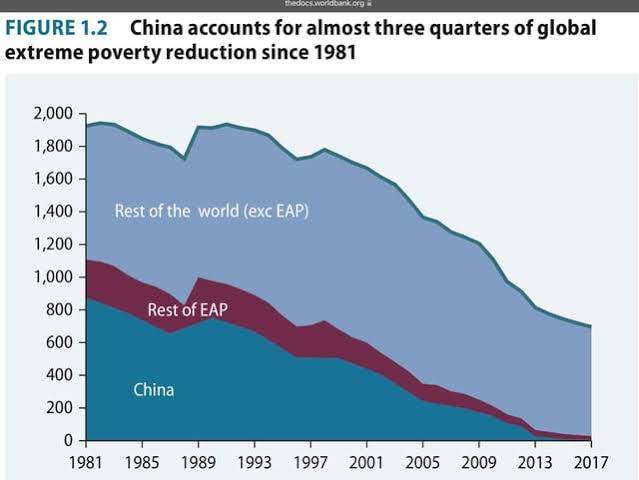this post was submitted on 20 Jun 2024
62 points (100.0% liked)
China
2032 readers
21 users here now
Discuss anything related to China.
Community Rules:
0: Taiwan, Xizang (Tibet), Xinjiang, and Hong Kong are all part of China.
1: Don't go off topic.
2: Be Comradely.
3: Don't spread misinformation or bigotry.
讨论中国的地方。
社区规则:
零、台湾、西藏、新疆、和香港都是中国的一部分。
一、不要跑题。
二、友善对待同志。
三、不要传播谣言或偏执思想。
founded 4 years ago
MODERATORS
you are viewing a single comment's thread
view the rest of the comments
view the rest of the comments

That post is extremely unserious. They have one dubiously sourced graph and a couple of numbers thrown in with zero explanation of how they arrived at them. It's about the same level of effort as your average Reddit post.
I mean they don't even bother to define what they mean by "extreme poverty" whereas the paper that i linked does. Of course if you play definition games you can adjust the poverty line until your data says what you want it to say. They're also talking about percentages of population in poverty rather than absolute numbers.
You can go to the website of the World Bank yourself where they claim to have gotten their data from (though they never specify exactly which World Bank data set they used) and look at the charts, what they are depicting, whether they specify total numbers of people in poverty or percentage poverty rates, and how they change depending on where you set the poverty line:
https://pip.worldbank.org/home
For instance if you use a slightly higher cutoff line then suddenly the story becomes even worse without China, and the global number of people in poverty actually becomes higher rather than lower while the rates barely decline. On every chart you see one striking feature: the sharpest decline occurs in the East Asia Pacific region, most of that is of course China.
If raw population size were the only thing explaining why China has such a big impact on the statistics you would expect to see similar effects coming from India, but you don't. And this is all assuming that the World Bank is an objective and neutral source of data whose pro-capitalist ideological bias doesn't affect how they measure and define certain things.
Also, another thing to consider: a problem with just looking at the poverty rate decline is that you can have a "global poverty reduction" simply by population growth in the developed world. What you'd really need to do is exclude China and the developed countries.